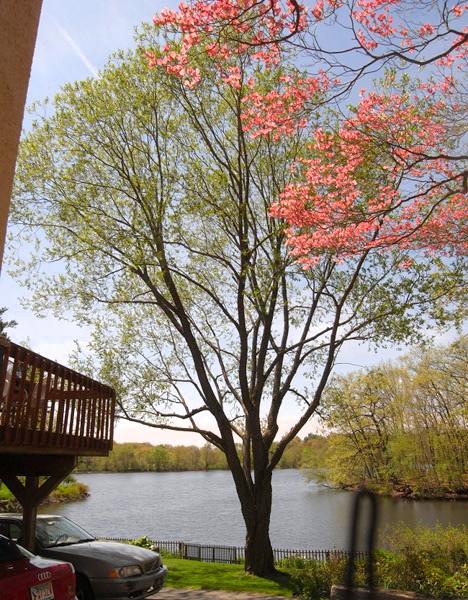
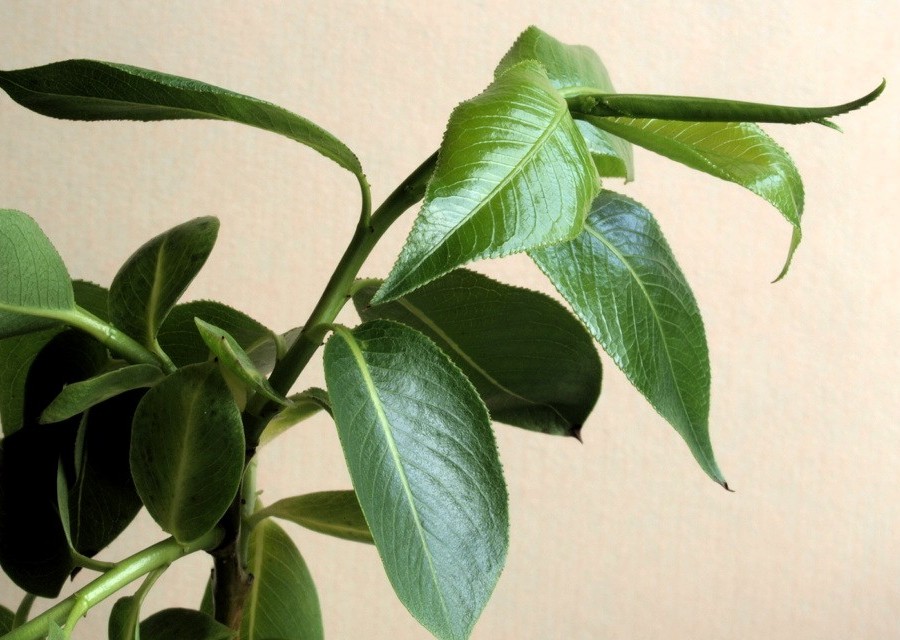
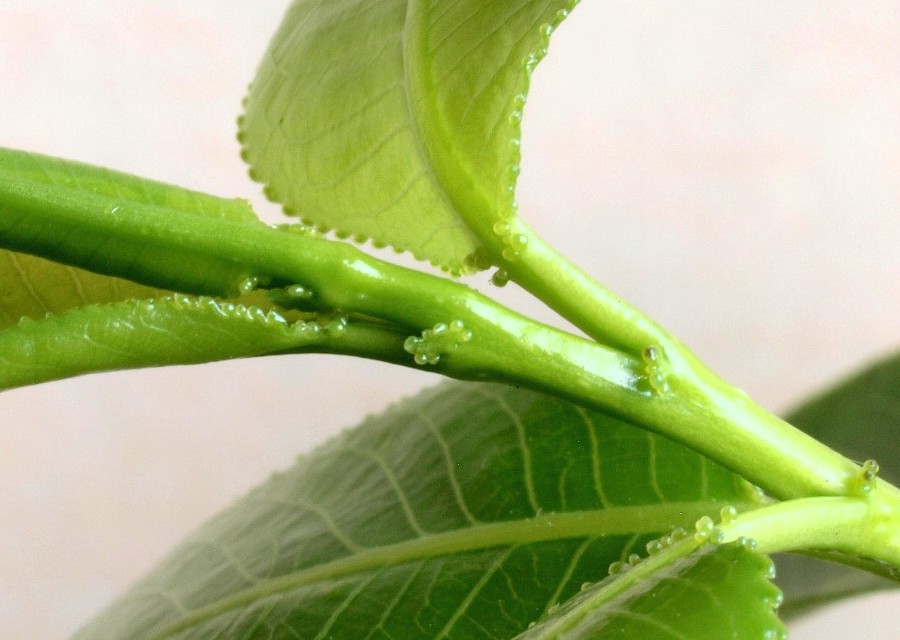
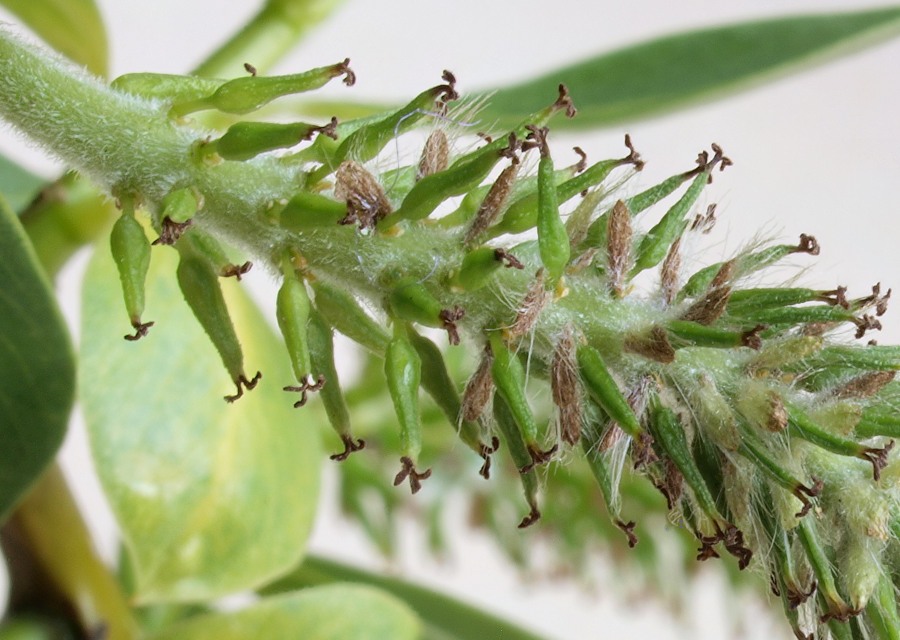

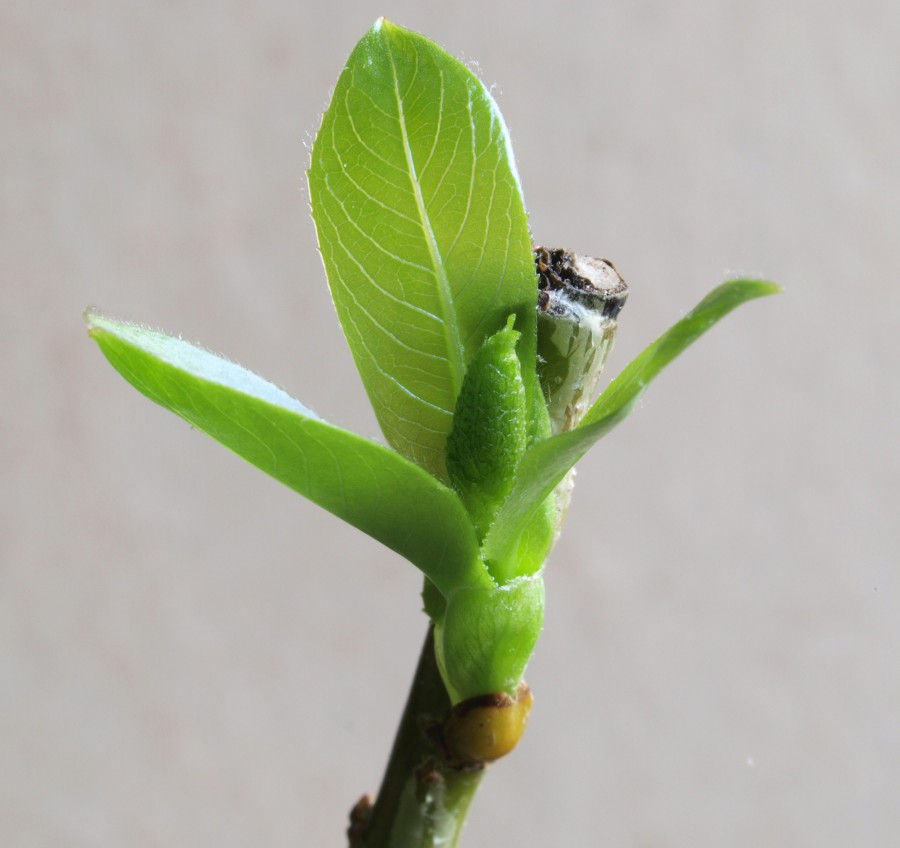 Salix × meyeriana from Winchester
Salix × meyeriana from Winchester
click on the image to open in another window unscaled
Willows of Massachusetts:
Salix × meyeriana Rostk.
(= S. pentandra × S. euxina) found
in Winchester, eastern Massachusetts






click on the image to open in another window unscaled
An Eurasian willow Salix pentandra L. has been erroneously reported from New England. The majority of North American samples identified as S. pentandra I examined at the Harvard University Herbaria and other herbaria appear to be hybrids of S. pentandra with S. euxina Belyaeva (S. fragilis auct., part.) known under the name Salix × meyeriana Rostk. ex Willd. [1, 2, 3]
According to the treatment of willows in FNA (Argus 2010),
"S. pentandra" introduced to North America has been known only as pistillate plants.
A plant currently cultivated under the name of S. pentandra at the Arnold Arboretum is
also a hybrid of S. pentandra,
though reperesenting a different, staminate clone [2].
Recently I have discovered a pistillate living specimen of S. × meyeriana planted at a private property
on the shore of the Upper Mystic Lake in Winchester, Middlesex County, Massachusetts. This is a large tree (83 cm DBH).
According to the owner, this willow is more than 50 years old. It was purchased at
a local nursery and planted in the early 1960's.
There are no branches within reach, readily accessible for examination; however, one can find some dropped twigs on the ground. Freshly dropped ones are capable of producing adventitious roots when put in water—a feature characteristic of S. euxina or S. x fragilis L. (in S. pentandra twigs are not brittle, and one should not expect finding many on the ground). Even though the leaves of the Winchester willow are broad and shiny, like those in S. pentandra, stipules are developed better (at least in young leaves); catkins are loose; and bracts exhibit long white hairs.
Examined herbarium samples of S. × meyeriana from eastern Massachusetts
-
Barnstable Co.
-
Harwich, roadside between Harwichport and West Harwich, Sept 2, 1918, M.L. Fernald, Bayard Long 16631 (NEBC). leafy stipules
-
Osterville, roadside, June 10, 1916, H.W. Child, C.H. Knowlton, F.W. Bird, R.C. Bean 16248 (NEBC). loose narrow catkins, bracts with long hairs
-
Provincetown, roadsides, August 2, 1919, M.L. Fernald, Bayard Long 18296 (NEBC: 2 sheets). loose narrow catkins, large leafy stipules
-
Sandwich, tree 30 ft. high near Shawme Lake, 21 July 1909, G.G. Kennedy 4 (NEBC: 2 sheets). loose narrow catkins, large leafy stipules
-
Harwich, roadside between Harwichport and West Harwich, Sept 2, 1918, M.L. Fernald, Bayard Long 16631 (NEBC).
-
Dukes Co.
-
Gosnold, Penikese Island, margin "Typha Pond"; E shore near harbor, July 24, 1923, John M. Fogg, Jr. 590 (NEBC). stipules well developed
-
Gosnold, Penikese Island, margin "Typha Pond"; E shore near harbor, July 24, 1923, John M. Fogg, Jr. 590 (NEBC).
-
Essex Co.
-
Beverly, Haven Ave., 1894, (NEBC).
catkins very loose
-
Ipswich, roadside, May 19, 1912, H. St. John 520 (NEBC).
bracts with long hairs; could be the same individual as the next following # 101
-
Ipswich, near the road, Oct 12, 1911, H. St. John 101 (NEBC). Might be the same individual as #520. Catkins loose (axis visible), leafy stipules present; seeds ripened late, as they should in S. pentandra, but this character may also occur in its hybrids
-
Beverly, Haven Ave., 1894, (NEBC).
-
Middlesex Co.
-
Cambridge, low wet area, along railroad, northwest Cambridge, July 5, 1975, H.E. Ahles 80380 (MASS). stipules present
-
Stoneham, Middlesex Fells, W of Dark Hollow Pond, probably
planted,
9 June 1920, N.T. Kidder (NEBC). some bracts with long hairs remaining, catkins rather loose
-
Wakefield, lakeside (tree), May 22, 1943, R.C. Bean (NEBC). bracts with long hairs, catkins narrow and loose
-
Wayland, roadside, May 30, 1915, F.W. Hunnewell 3392 (NEBC). loose catkins, bracts with long hairs, stipules present
-
Cambridge, low wet area, along railroad, northwest Cambridge, July 5, 1975, H.E. Ahles 80380 (MASS).
-
Norfolk Co.
-
Brookline, open swamp, May 10, June 1902, F.F. Forbes (NEBC). loose narrow catkins, bracts with long hairs, stipules present; perhaps same tree as # 1176
-
Brookline, open swamp by Hammond St., May 10, 1903; June 26 1901, F.F. Forbes 1176+ (NEBC). loose narrow catkins, bracts with long hairs, stipules present
-
Brookline, open swamp, May 10, June 1902, F.F. Forbes (NEBC).
-
Plymouth Co.
-
Hingham, May 28, 1933, C.H. Knowlton (NEBC). [cultivated] stipules present, catkins loose, bracts with long hairs
-
Hingham, May 28, 1933, C.H. Knowlton (NEBC). [cultivated]
-
Suffolk Co.
-
Boston Harbor Islands, 31 Aug 1996, I. Kadis
I have not been able to relocate this large tree; only a small fragment was examined, but its identity as S. pentandra hybrid seems rather obvious; apparently it had been planted.
-
Chelsea, U.S. Naval Hospital, cultivated tree 15-20 ft tall, 3 boles, May 30, 1015, G. Argus 3392 (NEBC). [cultivated]
bracts with long hairs.
-
Boston Harbor Islands, 31 Aug 1996, I. Kadis
A few of listed samples are definitely originating from cultivated plants; samples from Cambridge (1975) and Brookline (1901-1903) could originate from naturalized plants; as for those trees growing around ponds and at roadsides, it is difficult to say if they escaped from cultivation or were planted.
The available material provides no evidence that true S. pentandra has ever been introduced to New England—even though reliable identification of willow hybrids based on dry material is rather difficult and may not be always possible, particularly in this case. A series of herbarium samples by a single collector from Brookline and another one from Ipswich appear to be collections from the same tree (or at least the same population) at different seasons. Both series, and particularly the one from Brookline, allow the most confident identification S. × meyeriana. A single specimen of "S. pentandra" from Nantucket Co. (Nantucket, July 21, 1943, R.C. Bean, NEBC) has not been included in the list above. It may as well be S. × meyeriana, though due to insufficient collection cannot be identified properly.
It should be noted that the application of the name 'meyeriana' to these hybrids is largely arbitrary: it is hardly possible to visually separate hybrids of S. pentandra and S. euxina from those of S. euxina and S. alba, i.e., with S. × fragilis, which may phenetically approach S. euxina. It is even possible that not all of New England plants resembling S. pentandra are actually pentandra hybrids. The native S. lucida has similar lustrous, usually broad leaves. If this North American willow has been able to hybridize with S. euxina or even S. × fragilis, the resulting hybrids might look similar to S. × meyeriana. However, the only known hybrids of S. lucida are those with S. alba, described as S. × jesupii Fernald. Even though S. × fragilis (S. alba x S. euxina) is not less frequent than S. alba, its hybrids with S. lucida are not known. One possible explanation is that such hybrids have just been overlooked—similarly to those of S. pentandra and S. euxina. One of those samples that may support this hypothesis is from Essex Co.: Middleton, Creighton Pond, 4 July 1957, S. K. Harris, 12895 (NEBC); others, even more suggestive, are from Deerfield, western Massachusetts. Among the examined samples of 'S. pentandra', there is only a couple of those that have been entirely misidentified. One from Adams, Berkshire Co., is actually S. lucida; two from eastern Massachusetts are rather typical S. × fragilis: Barnstable Co.: North Truro, Pond Road, Aug 1, 1973 H.E. Ahles 78110 (MASS); Dukes Co.: Naushan, Sept 5, 1928, John M. Fogg, Jr. 3873 (US).